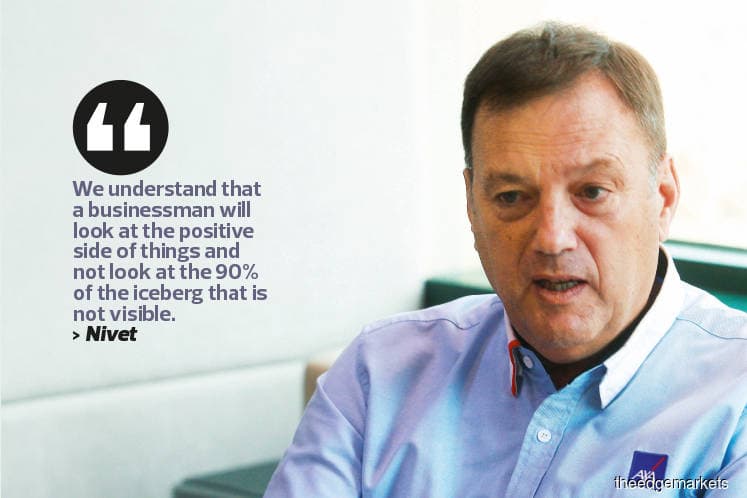
This article first appeared in Enterprise, The Edge Malaysia Weekly on November 11, 2019 - November 17, 2019
Although small and medium enterprises (SMEs) have been the backbone of economic growth and development, more than 50% of those in the country remain uninsured. This is rather alarming, especially when compared with what is happening in Europe and other Western countries, says AXA Affin General Insurance Bhd CEO Emmanuel Nivet.
He points out that most Western countries have rules and regulations that govern SMEs. For example, if a company wants to deal or trade with a third party, it is required to purchase liability insurance. Needless to say, this requirement is absent in Asian countries.
“For example, if you bring your clothes to the laundromat in Malaysia and something happens, the most they can do is say sorry and reimburse the cost of the laundry service. Whereas you are never left just like that when dealing with companies with liability insurance. Instead, they explain what happened and reimburse you the cost of your clothes,” says Nivet.
This does not apply to bigger companies because these companies carry out global trading activities, he adds. “For instance, Petroliam Nasional Bhd (Petronas) has a huge liability insurance programme because it deals with the world.”
Nivet attributes the low coverage rate among SMEs to a lack of awareness of the need for insurance and the Asian mentality, which does not prioritise risk. Having worked in the industry for 35 years, with significant experience in underwriting, he points out that businessmen tend to focus more on the excitement of opening a new business than thinking about the risks that go along with that particular business. “We understand that a businessman will look at the positive side of things and not look at the 90% of the iceberg that is not visible,” he says.
SMEs considering insurance to protect themselves against such eventualities should take the following steps.
1. Risk mapping
Identify your risks, says Nivet. Depending on the nature of your company’s business, these could be due to supply chain issues, natural disasters, exposure to explosions if dealing with highly flammable liquids or bodily injuries if your employees work in potentially dangerous situations.
In specific cases, you need to insure against the loss of talent. For instance, for a top restaurant in Kuala Lumpur, the loss of its head chef would be a major risk that could impact the company’s bottom line.
2. Risk assessment and mitigation
After you have mapped out the potential risks, you need to assess how much each of these is worth. After determining the cost to the company in any of these eventualities, you need to take steps to mitigate these risks. For instance, if your company’s dependence on one supplier is a cause for concern, you should probably find alternative suppliers to reduce your dependence, says Nivet. Then, if something happens, your company will be in a better position to manage the situation.
3. Risk retention
Once you have done all you can to mitigate the risks you have identified, what you are left with is the risks you can neither control nor manage. At this point, you need to evaluate how much of a loss you can take. For example, an SME may be able to manage losses of up to RM5,000. This is known as its “risk retention”, says Nivet. The risk of anything above this limit needs to be transferred to an insurance company.
4. Risk transfer
This brings us to the last step of the process — risks that cannot be absorbed internally and must be insured against. These include natural disasters such as floods and earthquakes. This depends on the nature of the business. For instance, a food and beverage company needs to insure against possible product contamination while this would be irrelevant to a manufacturing concern. The scope of coverage also depends on the location. For example, a company situated on high ground would not have to insure against floods.
Save by subscribing to us for your print and/or digital copy.
P/S: The Edge is also available on Apple's AppStore and Androids' Google Play.